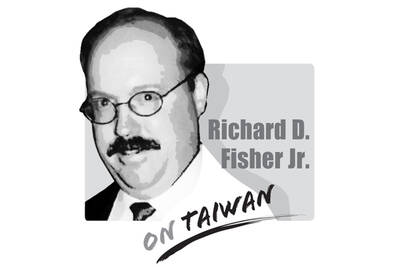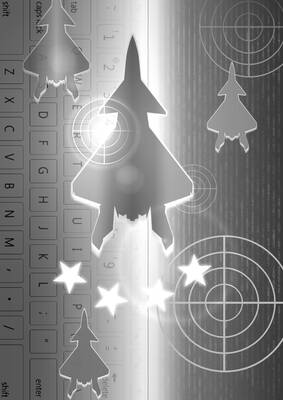President Tsai Ing-wen’s (蔡英文) administration pulled out all the stops to celebrate this year’s Double Ten National Day. To promote ethnic diversity, the celebrations were infused with elements of Taiwanese culture, such as the Taiwanese lion and drum dancers doing a ritual dance to the seven stars in the Big Dipper and Taoist bagua (八卦, eight trigrams), to showcase the vitality and traditional culture of the Taiwanese parade formation.
Other celebrations included exciting performances given by the Bruin Marching Band of the University of California and Tokyo Agricultural University Second High School’s Emerald Knights marching band, a five-day projection mapping spectacle at the Presidential Office Building dedicated to the celebration of iconic female figures that have shaped the history of Taiwan, and the annual National Day fireworks extravaganza accompanied by Taichung City’s jazz band and drone performances.
To put a cherry on the top of it all, a delegation of the Japan-ROC Diet Members’ Consultative Council and US Congressional members arrived to join in the celebrations, leading to a more inclusive, dazzling and artful event than the ones held during former president Ma Ying-jeou’s (馬英九) administration.
As Oct. 10 was established as “Taiwan National Day” in 2019, to placate the pro-Republic of China (ROC) factions, a Chinook helicopter carrying the “Blue Sky, White Sun, and a Wholly Red Earth” flag passed over the Presidential Office Building in Taipei at this year’s celebration. Retired army general Yu Pei-chen (于北辰) made the cheery remark that ever since the Democratic Progressive Party (DPP) assumed office, there has been no incidents of students setting the flag on fire. Ma should be happy that Tsai has picked up the mantle of defending the ROC and elevated Taiwan’s international status and image.
Due to Taiwan’s unique, complex status and the fracturing of the public’s national identity, the form of celebration for the National Day has always been a dilemma for presidents. For this year, National Day Celebration chairperson You Si-kun (游錫?) made Taiwanese consciousness the core idea of the event, taking spectators back to the Taiwan New Cultural Movement that saw its heyday in the 1920s, followed by a series of democracy movements, and after a 38-year-long martial law period, finally blossomed into the freest democratic country in Asia according to last year’s Human Freedom Index.
In Tsai’s last Double Ten National Day address, she highlighted the realization of the policy program she promised the public seven years ago, such as the indigenous submarine program, social reforms, global engagement and commitment to cross-strait peace. Tsai mentioned the Second Taiwan Strait Crisis instead of the Wuchang Uprising, a move to remind the public that the roots of the ROC have been resolutely planted in Taiwan.
Decades ago, when I was enrolled in the Taipei Municipal Teacher’s College, located next to the Presidential Office Building, I had to practice goose stepping and carry the cumbersome, heavy plaque of former president Chiang Ching-kuo (蔣經國) for two months in preparation for the National Day celebration. The austerity and solemnity of military parades was a sharp contrast to the dazzling smiles and the good vibes that the Emerald Knights brought.
Even though the Taiwanese-consciousness-embedded National Day celebration differed from the National Day celebration held during the White Terror period, there is still a long way to go before it can meet the full expectations of the Taiwanese public. I still remember I was moved to tears in 2021 when I heard a legislative speaker talking about the National Day from a Taiwanese perspective while casting aside the Chinese framework in 2021, after a 40-year interval, where he traced Taiwan’s democracy back to the petition movement for the establishment of a Taiwanese parliament, and connected the cultural enlightenment movement to the Taiwan New Cultural Movement founded by Chiang Wei-shui (蔣渭水) and others during the 1920s.
Strictly speaking, Oct. 10, 1911, was a day of injustice. After the Wuchang Uprising, Manchu people were slaughtered across China. As this is a day of bloodshed and atrocities, why should it be established as Taiwan’s national day in the first place?
It is praiseworthy that the Tsai administration has internalized the meaning of the Double Ten National Day, with possibilities that future administrations may start enfeebling the meaning or even canceling the holiday, just like Retrocession Day, a former public holiday in Taiwan to commemorate the end of Japanese rule of Taiwan, and the claimed retrocession of Taiwan to the ROC on Oct. 25, 1945. As pro-Taiwan factions do not acknowledge the idea of “Taiwan retrocession,” of course there should not be a holiday for it.
Even though Japan has already adopted the Gregorian calendar, Taiwan is still hanging on to the old relic of the ROC calendar left over by the Chinese Nationalist Party (KMT). In the spirit of Taiwan National Day, perhaps it is high time that Taiwan stiffen its resolve to establish a new constitution.
Chu Meng-hsiang is a counselor at the Lee Teng-hui Association for Democracy.
Translated by Rita Wang

As the Chinese Communist Party (CCP) and its People’s Liberation Army (PLA) reach the point of confidence that they can start and win a war to destroy the democratic culture on Taiwan, any future decision to do so may likely be directly affected by the CCP’s ability to promote wars on the Korean Peninsula, in Europe, or, as most recently, on the Indian subcontinent. It stands to reason that the Trump Administration’s success early on May 10 to convince India and Pakistan to deescalate their four-day conventional military conflict, assessed to be close to a nuclear weapons exchange, also served to
China on May 23, 1951, imposed the so-called “17-Point Agreement” to formally annex Tibet. In March, China in its 18th White Paper misleadingly said it laid “firm foundations for the region’s human rights cause.” The agreement is invalid in international law, because it was signed under threat. Ngapo Ngawang Jigme, head of the Tibetan delegation sent to China for peace negotiations, was not authorized to sign the agreement on behalf of the Tibetan government and the delegation was made to sign it under duress. After seven decades, Tibet remains intact and there is global outpouring of sympathy for Tibetans. This realization
After India’s punitive precision strikes targeting what New Delhi called nine terrorist sites inside Pakistan, reactions poured in from governments around the world. The Ministry of Foreign Affairs (MOFA) issued a statement on May 10, opposing terrorism and expressing concern about the growing tensions between India and Pakistan. The statement noticeably expressed support for the Indian government’s right to maintain its national security and act against terrorists. The ministry said that it “works closely with democratic partners worldwide in staunch opposition to international terrorism” and expressed “firm support for all legitimate and necessary actions taken by the government of India

The recent aerial clash between Pakistan and India offers a glimpse of how China is narrowing the gap in military airpower with the US. It is a warning not just for Washington, but for Taipei, too. Claims from both sides remain contested, but a broader picture is emerging among experts who track China’s air force and fighter jet development: Beijing’s defense systems are growing increasingly credible. Pakistan said its deployment of Chinese-manufactured J-10C fighters downed multiple Indian aircraft, although New Delhi denies this. There are caveats: Even if Islamabad’s claims are accurate, Beijing’s equipment does not offer a direct comparison